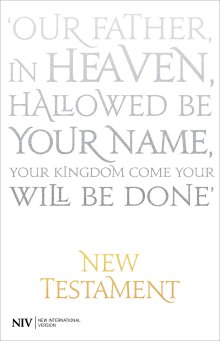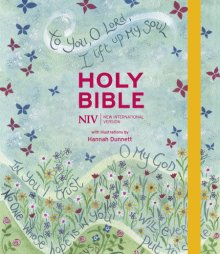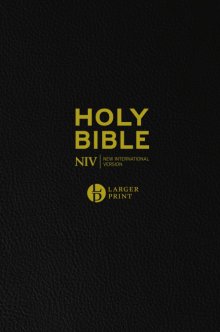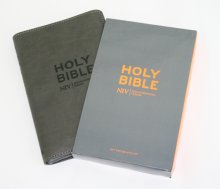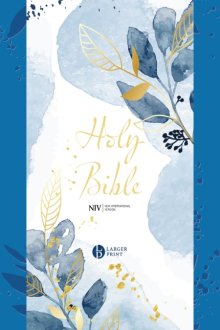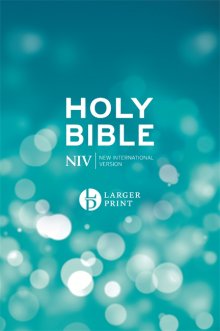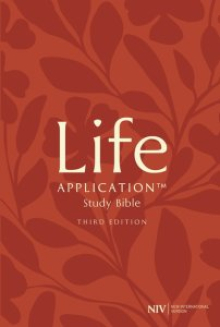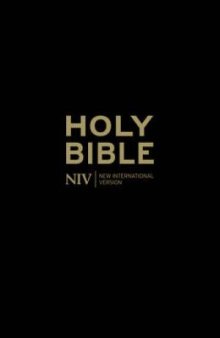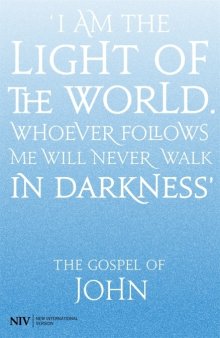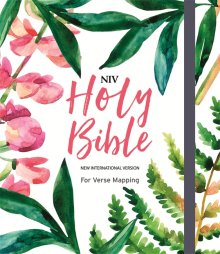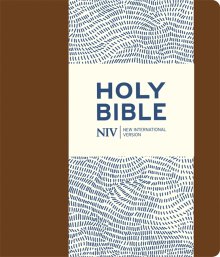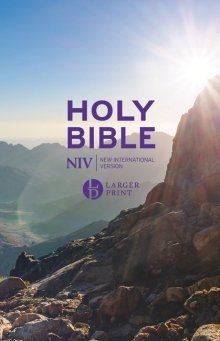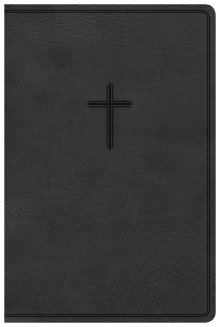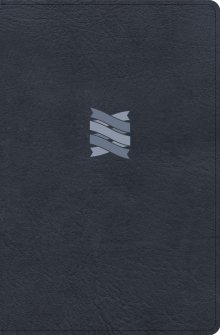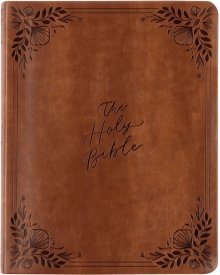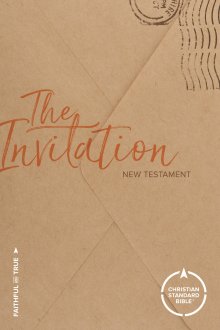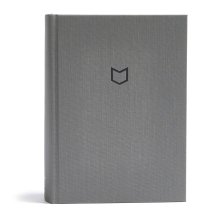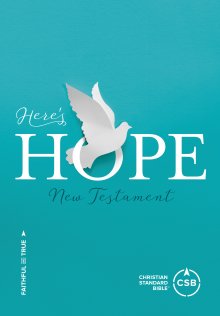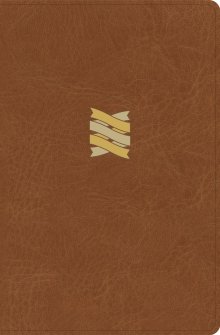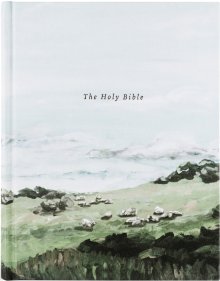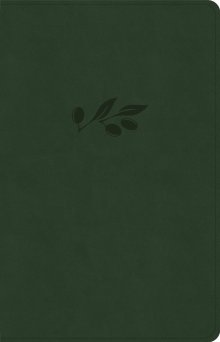CSB vs. NIV: Which Bible Translation is Best for You?
The Editor

Choosing a Bible translation can feel like a challenge.
With so many Bibles to choose from, how do you know which one is right for you? Two of the most popular and trusted modern translations on the shelf today are the New International Version (NIV) and the Christian Standard Bible (CSB). Both are known for their readability and commitment to the original texts, but they have distinct differences that might make one a better fit for your study and devotional life.
If you've ever found yourself wondering what sets these two translations apart, this guide is for you. We'll explore their history, translation philosophy, key differences, and help you decide which one to reach for.
In short:
The main difference between the CSB and the NIV lies in their modern approach to balance: the CSB (Christian Standard Bible) uses "Optimal Equivalence" to provide a slightly more literal, word-for-word reading experience, while the NIV (New International Version) is a popular "thought-for-thought" translation prized for its smooth, natural readability.
A Tale of Two Translations: Where did they come from?
The NIV Story
The New International Version has been a dominant force in the Bible world for decades. Its journey began in the 1960s when a multinational group of evangelical scholars saw the need for a contemporary English translation. Working directly from the best available Hebrew, Aramaic, and Greek texts, their goal was to create a version that was both accurate and highly readable. Published in full in 1978 and updated periodically since, the NIV has become the bestselling modern English Bible translation in the world. Its mission is to deliver a Bible that is clear, accessible, and trustworthy for a broad range of Christian readers.
The CSB Story
The Christian Standard Bible is a more recent addition, first published in 2017 as a significant revision of the Holman Christian Standard Bible (HCSB). The CSB was brought to life by a team of over 100 scholars from 17 denominations who sought to create a translation that struck an "optimal balance" between word-for-word and thought-for-thought approaches. Their aim was to produce a highly readable, yet highly reliable text that is suitable for both private devotion and public preaching. It has quickly gained a loyal following for its fresh and faithful rendering of the scriptures.
Translation Philosophy: Word-for-Word or Thought-for-Thought?
Every Bible translation must navigate the path between two main philosophies: formal equivalence (word-for-word) and dynamic equivalence (thought-for-thought).
- Formal Equivalence (Word-for-Word): This approach aims to translate each word of the original language as directly as possible into the receptor language. It prioritises grammatical and lexical accuracy.
- Dynamic Equivalence (Thought-for-Thought): This approach focuses on conveying the original meaning and intent of the text in a way that is natural and understandable to a modern reader, even if it means not translating every word literally.
The NIV sits firmly in the dynamic equivalence camp. It seeks to capture the "thought-for-thought" meaning of the original text, making it exceptionally easy to read and understand.
The CSB, on the other hand, describes its philosophy as "Optimal Equivalence." This is its unique selling point. The translators sought to find a middle ground, a "sweet spot" that is more literal than the NIV in many places, but more readable than highly formal translations like the ESV or NASB.

Want to learn more about Bible Translations? Read our simple guide.
The main difference between the NIV and the CSB is their translation philosophy: the NIV uses a thought-for-thought (dynamic equivalence) approach for maximum readability, while the CSB uses a balanced "optimal equivalence" approach that is more literal than the NIV but still easy to read.
Seeing the Difference for Yourself: NIV vs CSB Verse Comparisons
The best way to feel the difference is to see it in action. Let's look at a few key passages side-by-side.
Romans 1:16
- NIV: "For I am not ashamed of the gospel, because it is the power of God that brings salvation to everyone who believes: first to the Jew, then to the Gentile."
- CSB: "For I am not ashamed of the gospel, because it is the power of God for salvation to everyone who believes, first to the Jew, and also to the Greek."
Notice the subtle difference? The CSB uses "Greek" which is a more literal translation of the original text, whereas the NIV uses "Gentile" to convey the broader meaning of non-Jewish people.
John 3:16
- NIV: "For God so loved the world that he gave his one and only Son, that whoever believes in him shall not perish but have eternal life."
- CSB: "For God so loved the world in this way: He gave his one and only Son, so that everyone who believes in him will not perish but have eternal life."
Here, the CSB's "in this way" is a more literal rendering of the Greek, adding a slight nuance to the meaning that is captured differently in the NIV's more idiomatic phrasing.
Psalm 23:5
- NIV: "You prepare a table before me in the presence of my enemies. You anoint my head with oil; my cup overflows."
- CSB: "You prepare a table before me in the presence of my enemies; you anoint my head with oil; my cup overflows."
In this beloved Psalm, the translations are almost identical, showing that in many places the CSB and NIV read very similarly, prioritising clarity and natural English.
Key Differences at a Glance
Which Translation is Best for You?
So, the big question remains: which one should you choose?
Choose the NIV if:
- You are new to the Bible and want the most accessible and easy-to-read translation.
- You prioritise a smooth and natural reading experience for daily devotions.
- You are part of a church or study group that already uses the NIV.
Choose the CSB if:
- You enjoy the readability of the NIV but want a translation that is a step more literal.
- You want a single Bible that is great for both daily reading and deeper study.
- You appreciate a fresh, modern translation that still holds firm to the structure of the original languages.
Both the NIV and the CSB are faithful, reliable, and trustworthy translations of God's Word. The "best" Bible is the one you will read, study, and cherish. Why not try reading a few chapters of each online or in-store? You may find that one just 'clicks' with you.
You can explore our wide range of NIV Bibles here and our growing collection of CSB Bibles here.
More Bible Translation Comparisons
Still not sure which Bible is right for you? You can learn more in our complete, free 97-page ebook, 'How to Choose Your Bible'.
Latest Blogs

Advent
Gemma Simmonds & The Importance of Advent | Author Interview
We speak to Gemma Simmonds about her new Advent devotional 'Donkey Roads and Camel Treks' and why Advent is such an important season for the Christian journey.

Best Bibles
The Best Bibles of 2025
Discover our picks for the very best Bibles of 2025. We select the best Study Bible, Journaling Bible, Children's Bible and more released in 2025.

Bibles
The Best-Selling Bible Translations of 2025
Find out the best-selling Bible translations for 2025 in the UK. We break down the popularity of NIV, KJV, ESV, and others, helping you choose your next Bible + Get your Free 97-page Bible Buying Guide

Bible
How to Choose the Right Bible Translation
NIV vs. NLT vs. ESV vs. KJV vs. NKJV: What's the difference? Our simple guide explains each bestselling Bible translation to help you choose the right one.

Study Bible
Are Study Bibles Good for Beginners? (And Which One Should You Choose?)
Wondering if a Study Bible is too advanced? We explain why it's actually the best tool for beginners and review the top 3 choices (NIV, NLT & ESV) to help you start.

Bibles
The NLT Bible: Is It Accurate? Your Top Questions Answered (2025)
Is the NLT accurate? Is it a paraphrase? We answer the top 10 questions about the New Living Translation Bible to help you choose with confidence + Get your Free 97-page Bible Buying Guide

